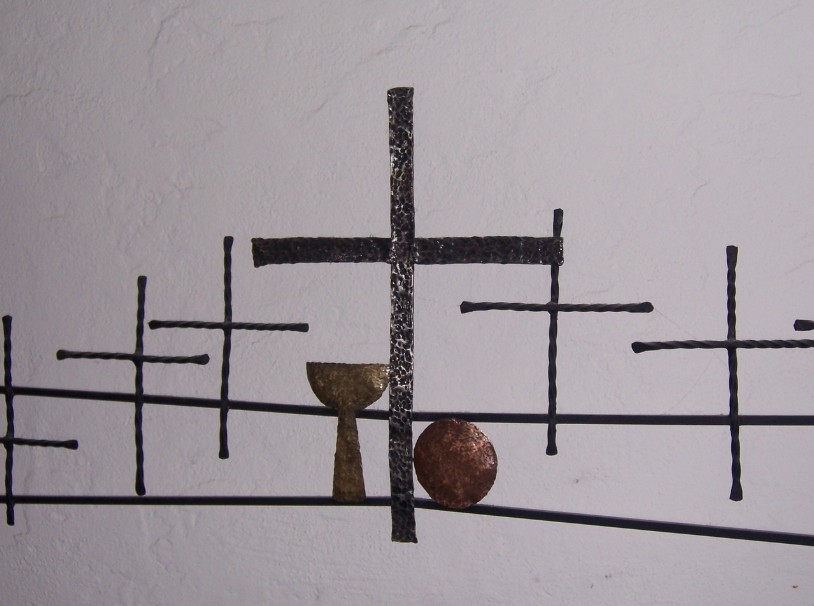As Holy Week approaches, I often reflect on the intricate relationship between Christianity and Judaism. In my role as the Interfaith Manager, I engage with challenging texts, consider the appropriateness of conducting Christian Seders, and deliberate over costume choices for Passion Plays. These reflective moments, however, extend beyond my professional responsibilities; they are shaped significantly by meaningful conversations with Jewish friends and colleagues, who, like me, find that this season highlights the ties between our two faiths.
An experience from a few years ago illustrates the sometimes-awkward convergence of Easter and Passover. A Jewish friend of mine was preparing for Passover, a sacred eight-day observance defined by specific ‘Kosher for Passover’ products. When he ventured into the local supermarket, he found the kosher section starkly empty of the necessary items. Inquiring with a shop assistant, he was informed that the Passover section had been entirely replaced with a display of Easter eggs. The irony was not lost on him.
This story highlights the often-fraught relationship between our communities, which, while foundational, is still marred by misunderstanding. Holy Week engages powerful themes: suffering and sacrifice, betrayal and redemption. But it also forces us to confront how we frame and depict the Jewish people, both in history and today.
This is not just an abstract concern—it has real-world consequences. Years ago, a Jewish family in the Scottish Highlands found their child taunted for “killing Jesus”. When the parents raised the issue, the teacher replied: “It’s not good that your child felt bullied, but the Jews did murder Jesus.”
This response highlights why we must be mindful of how we speak about Holy Week. The idea of Jewish culpability in Jesus’ death—long rejected by mainstream Christian theology—has had devastating consequences. Yet, if left unexamined, it can still seep into our narratives and assumptions. Holy Week provides one of the rare moments when Christian communities engage with Judaism, yet Jewish people are spoken about not with.
The story of Jesus’ final days unfolds within a vibrant Jewish context filled with Passover, the Temple, and various religious leadership, yet we must ask how often we genuinely acknowledge the diversity of Judaism during Jesus’ time. Predominant portrayals in Passion Plays and sermons often reduce complex historical relationships to simplistic binaries: the righteous Jesus against a legalistic Judaism, the compassionate Christ faced with blind Pharisees. Such oversimplifications not only flatten historical intricacies but also risk perpetuating harmful stereotypes. As we engage with these narratives, we must continually examine: How is Judaism being represented? Would a Jewish listener feel accurately depicted?
Another key theme is the relationship between Passover and the Last Supper. Jesus’ final meal was likely a Passover meal, but Passover in his time differed significantly from contemporary Jewish traditions.
Holy Week also highlights some of the most challenging scripture passages—those historically used to justify anti-Jewish sentiments. Verses that reference “the Jews” calling for Jesus’ crucifixion or that condemn the Pharisees can easily be misinterpreted through a hostile lens rather than through historical context. Are our congregations prepared to engage with these texts responsibly? Are we framing the Passion narrative in ways that stay true to its theological essence but doesn’t fuel anti-Judaism? These questions surpass theological discourse; they are fundamentally ethical inquiries.
Recently, the Public Life and Social Justice Programme Group hosted a webinar titled “Sacred Crossings: Where Passover and Holy Week Meet and Diverge.” Designed for church leaders, it sought to cultivate thoughtful dialogue around how Holy Week interacts with Jewish history, traditions, and communities. One significant challenge we discussed was the absence of Jewish voices in Christian spaces, leading to representations shaped without Jewish input. This gap can unintentionally create misrepresentations, paving the way for misunderstandings. As we reflect on this discussion, the challenge remains: how do we support churches in telling the greatest story ever told in a way that is faithful, responsible, and deeply aware of its historical and theological impact?
By Mirella Yandoli
If you are interested in receiving a link to the recording of the webinar, please feel free to reach out to me at myandoli@churchofscotland.org.uk
